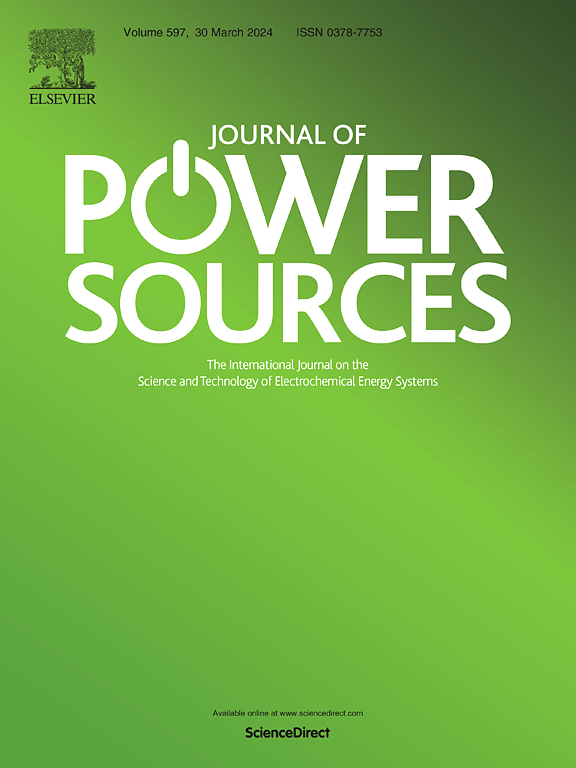Ion-exchange induced statically activated zinc-containing hydroxyapatite interface toward stable zinc metal anodes
IF 8.1
2区 工程技术
Q1 CHEMISTRY, PHYSICAL
引用次数: 0
Abstract
Zinc (Zn) metal has garnered substantial interest as an anode material in aqueous zinc-ion batteries (AZIBs) due to its cost-effectiveness and high theoretical capacity. However, its commercial viability is impeded by critical issues such as dendritic growth and parasitic side reactions. This study presents the construction of the Zn-induce static activation for hydroxyapatite layer (Z-HAP) on the zinc anode, which exhibits enhanced interface stability. The Z-HAP layer, rich in zinc-affinitive sites, facilitates preferential adsorption and ion exchange with calcium, thereby enabling controlled and uniform zinc ion transport and directing zinc growth and deposition along the hydroxyapatite structure. As a result, the Z-HAP@Zn symmetric cell demonstrates over 1800 h at 1 mA cm−2 with a cumulative capacity of 1 mAh cm−2, maintaining a low polarization voltage. Moreover, the Z-HAP@ZnǁMnO2 battery achieves exceptional cycling stability, with a capacity of 157.5mAh g−1 after 1000 cycles at 2 A g−1. This work reports on a statically activated hydroxyapatite layer that is effectively constructed on the zinc anode surface, providing valuable insights for the advancement of interface layer technologies in zinc anode applications.

求助全文
约1分钟内获得全文
求助全文
来源期刊

Journal of Power Sources
工程技术-电化学
CiteScore
16.40
自引率
6.50%
发文量
1249
审稿时长
36 days
期刊介绍:
The Journal of Power Sources is a publication catering to researchers and technologists interested in various aspects of the science, technology, and applications of electrochemical power sources. It covers original research and reviews on primary and secondary batteries, fuel cells, supercapacitors, and photo-electrochemical cells.
Topics considered include the research, development and applications of nanomaterials and novel componentry for these devices. Examples of applications of these electrochemical power sources include:
• Portable electronics
• Electric and Hybrid Electric Vehicles
• Uninterruptible Power Supply (UPS) systems
• Storage of renewable energy
• Satellites and deep space probes
• Boats and ships, drones and aircrafts
• Wearable energy storage systems
 求助内容:
求助内容: 应助结果提醒方式:
应助结果提醒方式:


